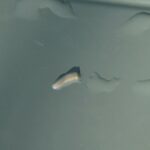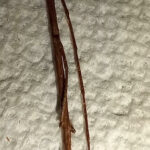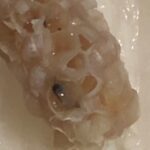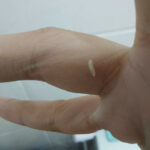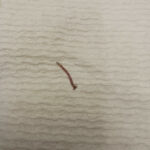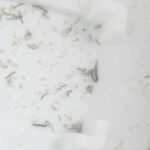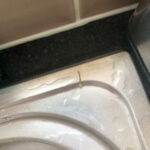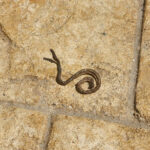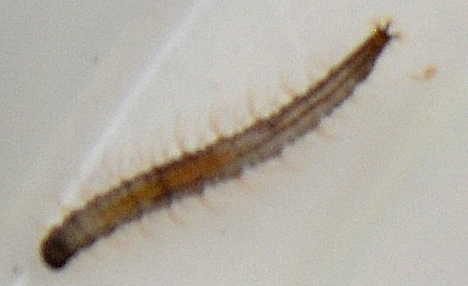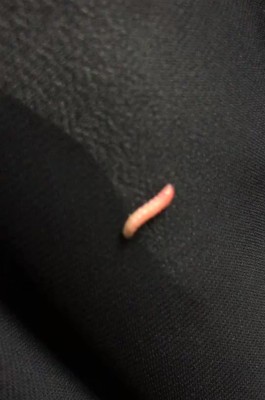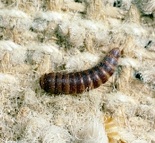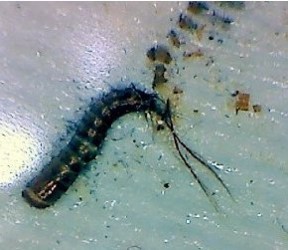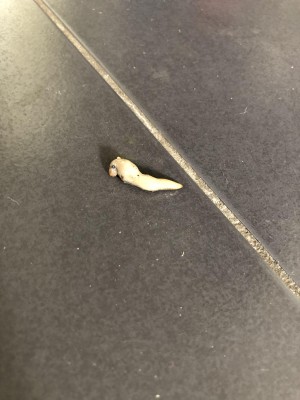
A reader from the UK found a white, slimy-looking creature on her kitchen floor. The creature is inconsistent in shape, its body having a round, thicker middle and then thinning out to a tip on one end, and into a more circular shape on the other, which seems to be curled into the body. The latter end also has a black circle with a white middle, and seems to have some discoloration.
According to our reader, this critter is 4cm in length (1.57-inches), so props to our reader for providing these measurements, as well as a clear image of the creature. It is difficult to identify exactly what species this critter is, but we believe it is an underdeveloped slug, perhaps a baby yellow slug (or ‘limax flavus’, so as not to confuse it with the giant banana slug). Its apparent viscosity and lack of consistent shape rules out the possibility of it being any type of caterpillar, larva, or maggot. Plus, if you zoom in on the picture, there seems to be a grayish underside on the bottom of the creature, which is characteristic of slugs.
Slugs are decomposers, as well as a vital source of food for other animal species such as: hedgehogs, birds and beetles. For this reason, slugs are considered beneficial to our environment, despite the negative opinion many hold of this garden pest. In the UK alone, there are approximately 40 species of slugs, according to SlugWatch. Yellow slugs in particular can reach 10cm (3.93-inches) in length, and, when fully grown, have a mottled yellow-brown patterned body. Although only a fraction of the UK’s species are considered pests, unfortunately yellow slugs are one of them, feeding on vegetation and seedlings. If our reader has a garden, we recommend moving the slug somewhere other than her garden, in the case that it is a yellow slug. However, its lack of color and distinctive features make it difficult to specify if it really is a yellow slug.
Additionally, despite their simple appearance, slugs are quite extraordinary creatures. Having evolved from snails, slugs can retract their head into their bodies when frightened, mimicking the action of a snail retracting into their shell. Some slugs even have shell parts in their mantle (check the diagram below) from their snail ancestors. The mantle is where the pneumostome is located, which is what we think the black dot is on the slug in the picture our reader sent in. The pneumostome houses a respiratory system, as well as the slug’s anus. Furthermore, slugs have two sets of tentacles, the top two being used for sight and smell, and the bottom two being used for touch and taste. And what more? Slugs can regenerate body parts if they lose them!
In conclusion, we think that the creature our reader has found on her kitchen floor is an underdeveloped slug! Although they are harmless indoors, they are not the most delightful of creatures to find inside your home. They are, however, not harmless to a garden, so we recommend placing the slug perhaps in a nearby park or other appropriate environment.
All About Worms is always free, always reader-supported. Your tips via CashApp, Venmo, or Paypal are appreciated! Receipts will come from ISIPP Publishing.
You might also find these guys interesting!






